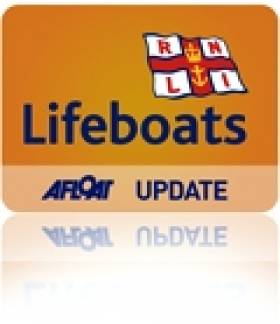Displaying items by tag: EPIRB
53 Degrees North Store Opens at Western Marine
53 Degrees North, Ireland's Outdoor Adventure Stores with branches already at Carrickmines and Blanchardstown - caters to Climbing, Hillwalking, Biking, Camping, Hiking, and of course watersports including Kayaking, Sailing, Surfing and Swimming.
Western Marine, Ireland's Largest Marine Distributors, was established in 1966 and is based at Bulloch Harbour since 1968. Western Marine caters to all marine markets, from sailing and motorboating to commercial workboats, and specialises in inflatable boats and RIBs as well as a huge range of marine equipment, lifesaving equipment etc.
Commenting on the new store, Western Marine's MD, Hogan Magee said "We're very enthusiastic about this venture - 53 Degrees North carry a full range of clothing, footwear and equipment from value for money through to top end premium quality products and that fits very well with our own philosophy of providing of premium quality at affordable prices.
The two ranges are complimentary, with very little product overlap, and the result is a truly comprehensive watersports display that we think is unparalleled anywhere in Ireland".
53 Degrees North MD Alan McFarlane said "We're really excited about this. Western Marine has a superb reputation in all marine markets, and the combination of the Western Marine and 53 Degrees North brands will give us both a wonderful opportunity to grow our businesses.The huge range of watersports gear which we offer now has a waterside home, and a whole new customer base. With free car parking spaces available in the adjacent boatyard, shopping with 53 Degrees North at Western Marine could not be easier"
Among the huge range of brands now available under one roof are worldwide leaders including Zodiac inflatable boats and RIBs, Teleflex steerings and engine controls, Skipper and Besto lifejackets & buoyancy aids, Icom VHFs, Gleistein yacht ropes, McMurdo EPIRBs, Harken, Lewmar, Garmin GPS, Pains Wessex Flares, Musto, Helly-Hansen and Henri-Lloyd sailing clothing, Dubarry marine footwear, O'Neill wetsuits, Oakley eyewear, surfboards by Cortez, and kayaks by Islander and Wilderness.
The new store is open 7 days a week throughout the Summer, with opening hours 9am to 6pm Monday through Saturday, and 1pm to 6pm on Sunday
ComReg launches Personal Locator Beacon (PLB) Registration Website
Personal Locator Beacons, or PLBs, are portable radio transmitters, which aid the Search & Rescue (SAR) emergency services in the detection and location of persons in distress. These devices operate in a similar manner to Emergency Position Indicating Radio Beacon (EPIRBs) onboard vessels and Emergency Locator Transmitters (ELTs) onboard aircraft, but are unique in that they for personal use and are not registered to a particular vessel or aircraft.
ELTs and EPIRBs have been in operation for several years are proven technologies, which have resulted in many successful search and rescues missions since their inception. More recently technological advances have enabled the construction of light-weight, hand-portable distress transmitters and hence the relatively recent emergence of PLBs onto the market.
In order to maximise the effectiveness of PLB usage, each PLB should be registered so that owner details as well as location details can be communicated to the emergency services which in many cases assists in speeding up rescue operations.
PLB owners can now register their PLB in Ireland using ComReg's new web portal. For more information on how to register your PLB please go to www. Comreg.ie or contact [email protected] or phone 01 804 9600.
Scottish Lifeboat Launched for Emergency Beacon Alarm
Scotland's Oban RNLI lifeboat, the Mora Edith Macdonald, was called out at twenty past midnight last night in response to an EPIRB alarm.
The EPIRB, Emergency Position Indicating Radio Beacon, was swiftly traced by the lifeboat direction finding equipment to an un-attended 45ft ketch on a mooring at Oban Marina.
The lifeboat crew, accompanied by a police officer, cut the padlock to gain access to the vessel and found the offending beacon in a locker in the forward cabin.
It proved impossible to switch off the device due to a faulty switch and the crew were forced to dismantle the unit in order to disconnect the battery.
The lifeboat was re-fuelled and ready for service at two minutes to one in the morning.
In the case of 406 MHz beacons which transmit digital signals, the beacons can be uniquely identified almost instantly and furthermore, a GPS or GLONASS position can be encoded into the signal, which provides instantaneous identification of the registered user and its location.
Frequently, by using the initial position provided via the satellite system, SAR aircraft and ground search parties can home in on the distress signals from the beacons and come to the aid of the concerned boat, aircraft, or people.
Related Safety posts
RNLI Lifeboats in Ireland
Safety News
Rescue News from RNLI Lifeboats in Ireland
Coast Guard News from Ireland
Water Safety News from Ireland
Marine Casualty Investigation Board News
Marine Warnings































































